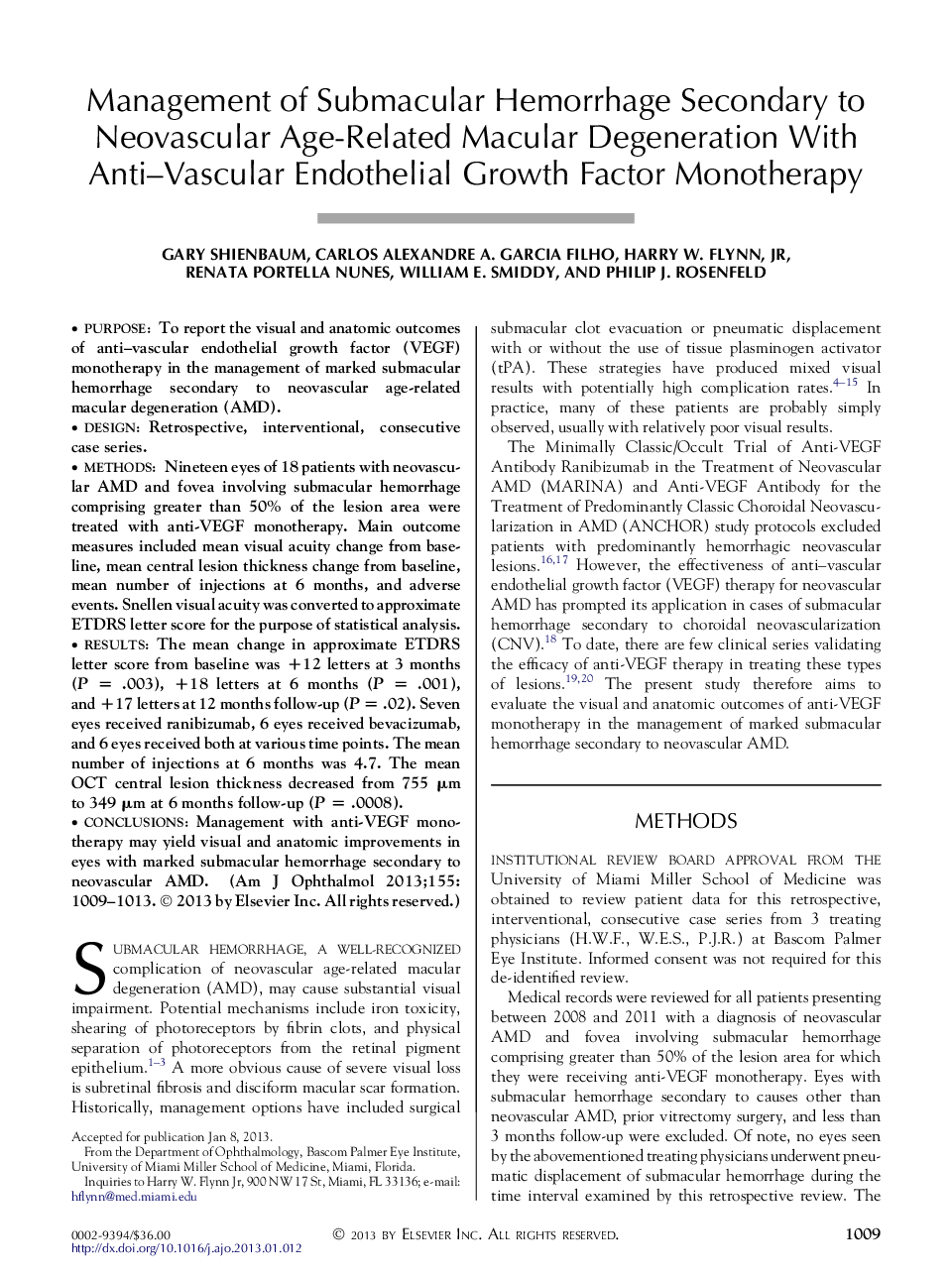| کد مقاله | کد نشریه | سال انتشار | مقاله انگلیسی | نسخه تمام متن |
|---|---|---|---|---|
| 6195923 | 1602147 | 2013 | 5 صفحه PDF | دانلود رایگان |

PurposeTo report the visual and anatomic outcomes of anti-vascular endothelial growth factor (VEGF) monotherapy in the management of marked submacular hemorrhage secondary to neovascular age-related macular degeneration (AMD).DesignRetrospective, interventional, consecutive case series.MethodsNineteen eyes of 18 patients with neovascular AMD and fovea involving submacular hemorrhage comprising greater than 50% of the lesion area were treated with anti-VEGF monotherapy. Main outcome measures included mean visual acuity change from baseline, mean central lesion thickness change from baseline, mean number of injections at 6 months, and adverse events. Snellen visual acuity was converted to approximate ETDRS letter score for the purpose of statistical analysis.ResultsThe mean change in approximate ETDRS letter score from baseline was +12 letters at 3 months (P = .003), +18 letters at 6 months (P = .001), and +17 letters at 12 months follow-up (P = .02). Seven eyes received ranibizumab, 6 eyes received bevacizumab, and 6 eyes received both at various time points. The mean number of injections at 6 months was 4.7. The mean OCT central lesion thickness decreased from 755 μm to 349 μm at 6 months follow-up (P = .0008).ConclusionsManagement with anti-VEGF monotherapy may yield visual and anatomic improvements in eyes with marked submacular hemorrhage secondary to neovascular AMD.
Journal: American Journal of Ophthalmology - Volume 155, Issue 6, June 2013, Pages 1009-1013